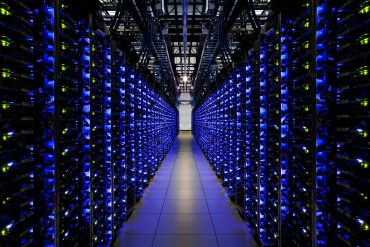
Google Data Center Power Usage Doubles to Ireland-Scale Levels
5 minute read

Data center power demands surge as Google’s artificial intelligence computing strains global energy infrastructure and climate goals
Key Takeaways
- Google’s data center electricity consumption doubles in four years to 30.8 million megawatt-hours in 2024, equivalent to Ireland’s annual consumption, driven by AI workloads and cloud services expansion.
- Carbon emissions surge 51% since 2019 reaching 11.5 million tonnes despite Google’s net-zero commitments, highlighting the challenge of balancing AI growth with sustainability goals.
- Historic fusion power deal signed with Commonwealth Fusion Systems for 200 megawatts from planned Virginia facility, marking Google’s push into advanced clean energy sources to meet skyrocketing demand.
Introduction
Google confronts a stark energy reality as artificial intelligence drives unprecedented power consumption across its global data center network. The tech giant’s electricity usage has more than doubled in four years, reaching levels equivalent to an entire country’s annual consumption.
This surge comes despite Google’s ambitious climate commitments and substantial investments in clean energy infrastructure. The company’s latest sustainability report reveals the mounting challenge of reconciling AI-driven growth with environmental responsibility.
Key Developments
Google’s data centers consumed 30.8 million megawatt-hours of electricity in 2024, representing a dramatic increase from 14.4 million megawatt-hours in 2020. This acceleration reflects the company’s massive AI investments and expanding cloud services portfolio.
The company simultaneously announced a groundbreaking agreement with Commonwealth Fusion Systems to purchase 200 megawatts from their planned Arc power plant in Virginia. This deal represents one of the first commercial fusion power contracts in the industry, though the facility remains in development stages.
Google’s overall carbon emissions climbed 11% last year to 11.5 million tonnes, marking a 51% increase since 2019. Data centers accounted for 95.8% of the company’s total electricity budget in 2024, underscoring their central role in Google’s energy profile.
Market Impact
The energy surge places Google alongside other tech giants facing similar challenges as AI workloads strain power grids. Industry analysts project AI-driven demand will account for significant portions of data center power consumption by 2027.
Google’s power usage effectiveness (PUE) improved to 1.09 in 2024, approaching the theoretical ideal of 1.0. However, efficiency gains now deliver diminishing returns as the company exhausts traditional optimization methods.
The company added 2.5 gigawatts of new clean energy capacity to power grids in 2024, equivalent to more than four million solar panels. This procurement helped reduce data center energy emissions by 12% despite the 27% increase in electricity demand.
Strategic Insights
Google’s fusion power contract signals a broader industry shift toward advanced energy technologies as conventional renewables struggle to meet exponential demand growth. The deal with Commonwealth Fusion Systems leverages the startup’s MIT connections and positions Google as a pioneer in commercial fusion adoption.
The company’s introduction of more efficient AI chips, including the Ironwood TPU, demonstrates hardware innovation’s critical role in managing energy consumption. These chips use nearly 30 times less energy than Google’s first Cloud TPU from 2018 while delivering significantly more computing power.
Regional disparities in clean energy access highlight operational challenges, with Google achieving 92% carbon-free electricity matching in Latin America compared to only 5% in the Middle East and Africa. This geographic imbalance complicates global sustainability strategies.
Expert Opinions and Data
Michael Terrell, Google’s head of advanced energy, acknowledged the extended timeline required for achieving fusion power objectives during recent press briefings. The company maintains realistic expectations while pursuing breakthrough technologies.
“We remain focused on our environmental ambitions as we advance the frontiers of AI and all the ways it can benefit humanity,” stated Kate Brandt, Google’s Chief Sustainability Officer. Her comments reflect the company’s commitment to balancing innovation with environmental responsibility.
According to MIT Technology Review, the Commonwealth Fusion deal represents a significant milestone for fusion power commercialization, though skepticism remains regarding timeline assurances given the technology’s development challenges.
Google’s sustainability report reveals the company invested $20 billion in carbon-free power plants through collaboration with Intersect Power and TPG Rise Climate. These investments underscore the scale of financial commitment required to address energy demand growth.
Conclusion
Google’s energy consumption trajectory illustrates the fundamental tension between AI advancement and climate goals across the technology sector. The company’s dual approach of pursuing breakthrough energy technologies while maximizing efficiency gains represents the industry’s current strategy for managing this challenge.
The fusion power contract and continued clean energy investments demonstrate Google’s commitment to long-term sustainability solutions. However, the immediate reality of doubled electricity consumption and rising emissions highlights the urgent need for both technological innovation and operational transformation in the AI era.





